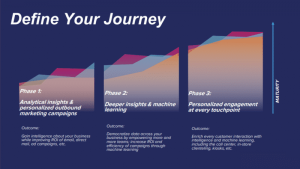by John Motavalli, Columnist, July 20, 2016
One thing we love about Google is its penchant for coming up with marketing ploys that only it could execute or even acknowledge. Case in point: A recent Google claim that marketers are losing up to 70% of “potential mobile shoppers” by relying on conventional demographic suppositions.
Harkening back to the 1930s, when it took a Freudian psychologist to realize that women were involved in automobile buy decisions (and that marketers should use women in ads), Google claims that when it comes to mobile programmatic advertising, expect the unexpected demographically.
Consider this: Google cites a 2015 Millward Brown digital survey on mobile purchasers and influencers, indicating that those looking on mobile devices to purchase video games are not the heavily male demo one would suspect. Instead, only 31% of mobile searchers in that survey were the usual men 18-34. Hence, the 70% of others, whom we assume are parents buying video games for their kids or spouses buying video games for the unrepentant adults still playing with such toys. Some of them were probably also under 18, male or female.
Another finding Google cites indicates that 40% of baby product purchasers online live in households without children. Counter-intuitive? Not really, as one has to take into account baby showers, grandparents, friends and the like. So, if going by conventional demographics alone, you would miss 40% of the total audience for baby products.
Marketers Already Know This
We put this to a guy who is a former president of a magazine’s online division, and he squawked, big time. Obviously, he said, companies like Johnson & Johnson already know this kind of thing. Moreover, supermarkets have detailed demographic data from scanners, and this isn’t news to them either, and obviously they share it with product manufacturers. On July 2, as Time Warner announced a big marketing deal with Google’s DoubleClick, Time Warner’s CMO credited Google with the insight that there was a cross-marketing affinity between two of its biggest movies. Wouldn’t they know that themselves?
But Google has a counter to this. Of course, they would.
They argue that it’s almost impossible to pinpoint precisely who is likely to buy a product unless one is possessed of greatly detailed search data from Google and YouTube. Google has a phrase they like, “Intent beats Identity.” What does that mean? Let’s say you’re a grandparent. The last time you bought a baby product was 30 years ago. Your identity would indicate that you are not part of the target demographic. But then your son or daughter has a child, and you, as a doting grandparent, are suddenly buying baby products left and right. Only Google would know this, because you searched for baby products using its facilities or visited a YouTube video relevant to the topic.
Moreover, by using YouTube to reach these people, one can be even more accurate in identifying “intent.” Google cites Home Depot, which figured out a while ago that many customers were going on YouTube to watch how-to videos. Home Depot then shifted its marketing to be built around making how-to videos for YouTube, with hundreds of videos online now.
You might have noticed that this column frequently focuses on Google and its complete domination of programmatic advertising. That’s because the gap between what most online publishers can offer and what Google features keeps widening. We are not advocating for Google, and they hardly need our help. But we think it’s campaigns like this that are driving many would-be competitors to consider non-advertising solutions like micro-payments, touched on last week.
MediaPost.com: Search Marketing Daily
(63)
Report Post




